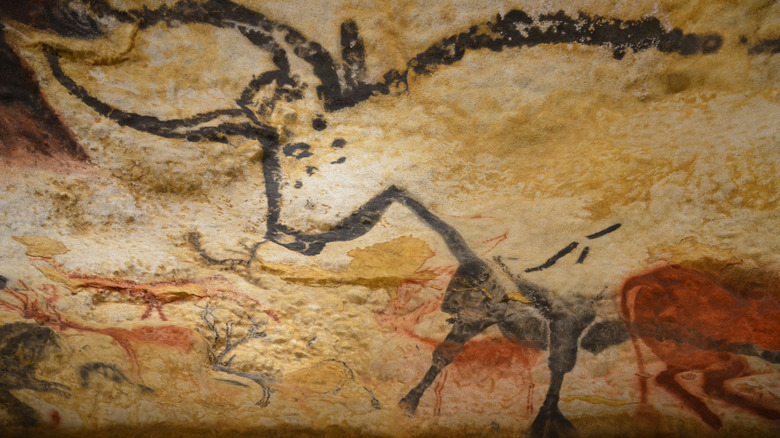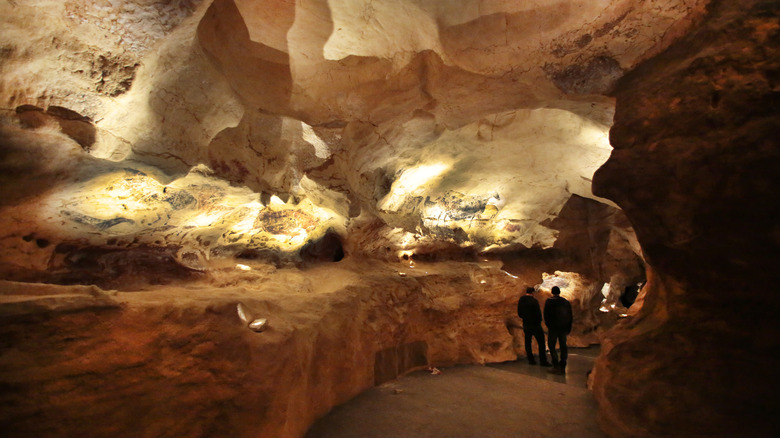The Real Reason You're Forbidden To Go Into The Lascaux Cave
As Britannica reports, the Grotte de Lascaux (Lascaux Grotto) in the southwest of France is famous for the stunning prehistoric art daubed on its walls. There are around 2,100 artworks here, both engraved and painted, a bounty unlike almost any other found anywhere else on Earth. The grotto has an incredible history, having been discovered quite by chance in 1940.
According to History, a quartet of teenage boys literally fell into this historical treasure trove while pursuing their dog, which had darted down a small, concealed tunnel. The boys followed the dog through the gap, finding themselves surrounded by stunning artworks. In short order, archaeologist Henri-Édouard-Prosper Breuil investigated further, and analysis suggests that the works are around 15,000 years old — perhaps even as old as 17,000. Needless to say, it became an enormously popular tourist attraction. The Lascaux-Dordogne Tourism Office reports that 1,500 people visited the cave every day. It was closed in 1963, however, because its very popularity would have been its downfall.
The Lascaux-Dordogne Tourism Office explains that the artworks –- undisturbed for millennia before Marcel Ravidat, Jacques Marsal, Simon Coencas and Georges Agniel discovered them by mistake – were in danger of fading as a result of the carbon dioxide expelled by visitors. As a result, the grotto has been closed since the 1960s, but an identical replica has been created for tourists to enjoy.
Visitors and other natural dangers threatened the prehistoric paintings
The International Centre of Cave Art of Montignac-Lascaux, The Lascaux-Dordogne Tourism Office explains, recreates every detail of the prehistoric original. It was reportedly created using the very same materials and painting techniques the original artists are believed to have used.
As a protected site, UNESCO carefully monitors and maintains the Lascaux Cave. In 2008, UNESCO's World Heritage Committee issued a report detailing "the fragility of the Lascaux cave paintings," stating that the immediate land on which the grotto was found had to be restricted to only the most essential access. It discussed conservation efforts and further consideration being given to the methods used to treat and maintain the priceless artwork inside. "Potential impacts including waterflows" also pose a natural threat.
Between this and the committee's fear that "a new microbial outbreak could not be prevented," it's clear why visitors are forbidden to enter the original Lascaux Cave. At the same time, though, its contents are hugely significant to human history, and the tireless work of the expert team at The International Centre of Cave Art of Montignac-Lascaux ensures they can still be viewed safely.

